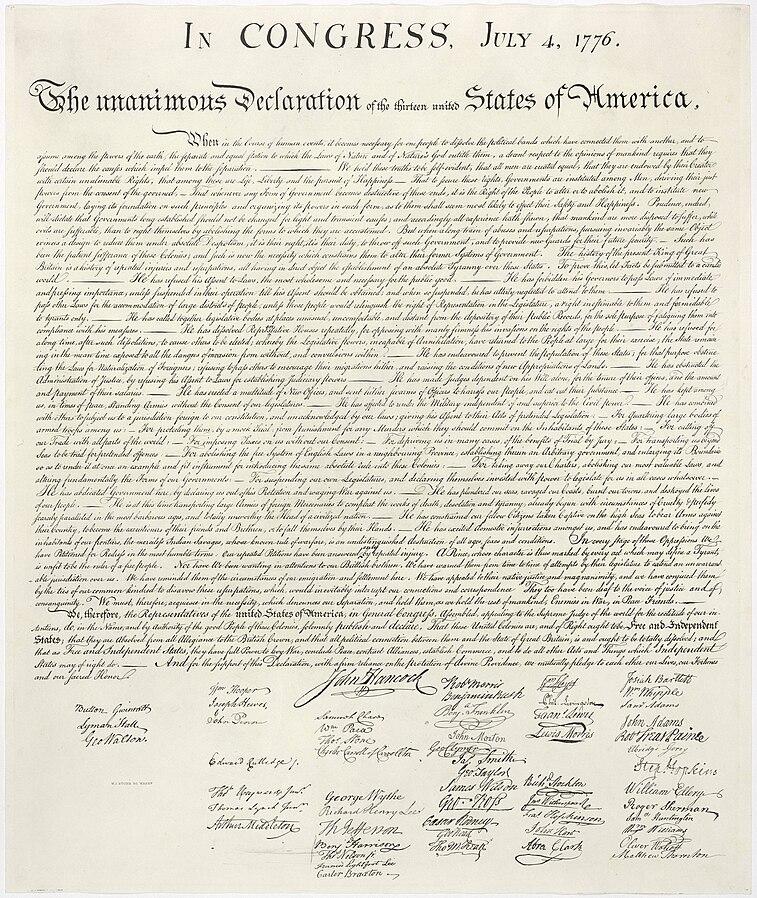Pictured is a stone engraving of the Declaration of Independence from 1823. The Declaration of Independence, a hallmark of American history, y asserts the colonies' right to independence from British rule. Crafted primarily by Thomas Jefferson and adopted on July 4, 1776, it proclaims the rights of life, liberty, and the pursuit of happiness. The document galvanized support for the American Revolution and laid the groundwork for democratic governance. A notable quote from the Declaration of Independence is of follows, "We hold these truths to be self-evident, that all men are created equal, that they are endowed by their Creator with certain unalienable Rights, that among these are Life, Liberty and the pursuit of Happiness.” The determination of “men” noted in the Declaration of Independence has sparked controversy due to the lack of notable women within the document.
One notable author who seemed to have a response to these documents was Elizabeth Cady Stanton. Stanton was a notable American writer and activist and was known as a leader of the women’s rights movement. One of her most prominent works was the “Declaration of Sentiments,” which seemed to be a sort of response to Thomas Jefferson's Declaration of Independence. One of the first statements in Stanton's writing was, “We hold these truths to be self-evident: that all men and women are created equal;” Stanton's Declaration of Sentiments directly addresses the issue of gender inequality, which was not addressed in Jefferson's declaration. While Jefferson's document proclaimed the equality of "all men," it did not extend this equality to women. Stanton's declaration seeks to correct this omission by asserting women's rights and calling for an end to their oppression. In “FROM THE DECLARATION OF INDEPENDENCE TO THE DECLARATION OF SENTIMENTS: THE LEGAL STATUS OF WOMEN IN THE EARLY REPUBLIC 1776-1848” Linda Kerber states, “ By tying the complaints of women to the most distinguished political statement the nation had made she implied that the women's demands were no more or less radical than the American Revolution had been; that they were, in fact, an implicit fulfillment of the commitments already made.” The Declaration of Sentiments was an astonishing piece that allowed the nation to declare a need for women’s rights and spark a revolution that was much needed. Stanton challenged societal norms, fought for suffrage, and advanced women's equality. Her efforts laid the groundwork for the eventual passage of the 19th Amendment, granting women the right to vote. Stanton is the definition of defining oddities and breaking boundaries previously placed upon someone. She is a testimony to not only the strength and willingness that women hold but the fighting spirit that women possess as well.
Works Cited
"File." Wikipedia, Wikimedia Foundation, 17 May 2021, en.wikipedia.org/wiki/File:United_States_Declaration_of_Independence.jpg. Accessed 5 May 2024.
Jefferson, Thomas. “Declaration of Independence: A Transcription.” National Archives and Records Administration, National Archives and Records Administration, www.archives.gov/founding-docs/declaration-transcript. Accessed 4 May 2024.
Kerber, Linda K. “FROM THE DECLARATION OF INDEPENDENCE TO THE DECLARATION OF SENTIMENTS: THE LEGAL STATUS OF WOMEN IN THE EARLY REPUBLIC 1776-1848.” Human Rights, vol. 6, no. 2, 1977, pp. 115–24. JSTOR, http://www.jstor.org/stable/27879046. Accessed 5 May 2024.
Stanton, Elizabeth. “Declaration of Sentiments.” National Parks Service, U.S. Department of the Interior, 7 Feb. 2023, www.nps.gov/wori/learn/historyculture/declaration-of-sentiments.htm.


